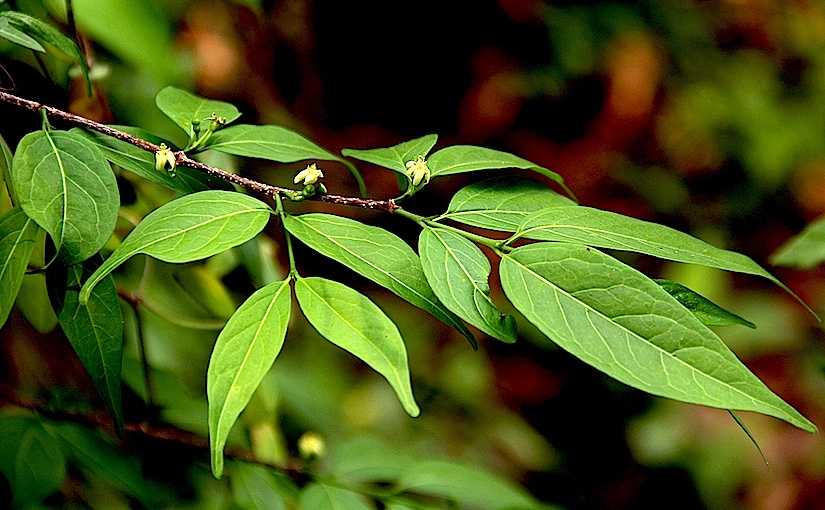Pharmacognostic study of two medicinal species of Rytigynia (Rubiaceae) from Nigeria
by Ajayi G. O., Kadiri A. B., Egbedi M. E., Oyeyemi O. O. (2011)
University of Lagos, Nigeria
in Phytologia Balcanica 17(3): 355-359 – DOI: 10.1055/s-0031-1282754 –
http://www.bio.bas.bg/~phytolbalcan/PDF/17_3/17_3_10_Ajayi_&_al.pdf
Abstract.
Micromorphological studies and phytochemical screening of the leaves of Rytigynia nigerica and R. umbellulata were carried out.
The epidermal cells of both adaxial and abaxial surfaces have irregular shape, and the anticlinal cell wall patterns are either curved or undulate.
Some remarkable diagnostic features of the two plants, which in a way justify their grouping in the same genus, are: paracytic stomatal type, hypostomatic leaf and centrally located vascular bundles in the midrib, and spatial deposition of crystals of calcium oxalate in the perivascular tissue.
The distinctive features of each species include a higher epidermal cell number in R. nigerica than R. umbellulata; a thin cell wall of 1.0 (1.6±0.2) 3.0µm on the abaxial surface of R. nigerica; a greater stomatal size of 6.0 (12.4±1.2) 20µm × 5.0 (13.4±1.3) 20µm in R. umbellulata, as well as a long and tip-bent trichomes reported on the abaxial surface of R. nigerica and of the multicellular glandular type on the adaxial layer of R. umbellulata.
Phytochemical screening has shown that in R. nigerica were present such bioactive compounds as tannins, saponins, reducing compounds, steroids, and flavonoids, whereas anthraquinones, cardiac glycosides, cyanogenetic compounds, phlobatannins and alkaloids were absent. In R. umbellulata, alkaloids, tannins, saponnins, reducing compounds, and flavonoids were present, whereas anthraquinones, steroids, cardiac glycosides, and phlobatannins were absent.
These bioactive compounds found in the leaves of these plants contribute greatly to their medicinal potential. The two species are well known plants, used in folk medicine in Nigeria.

